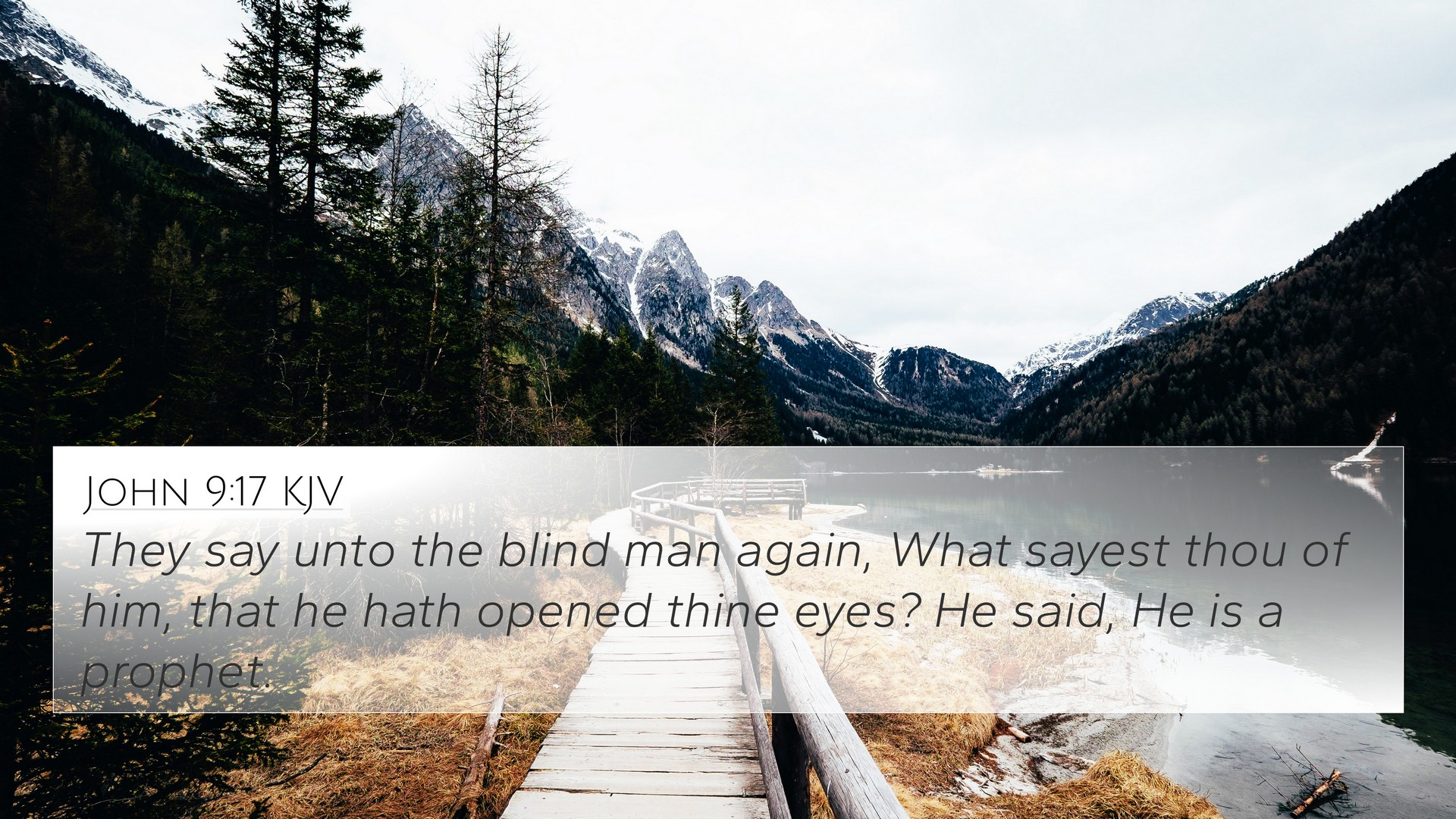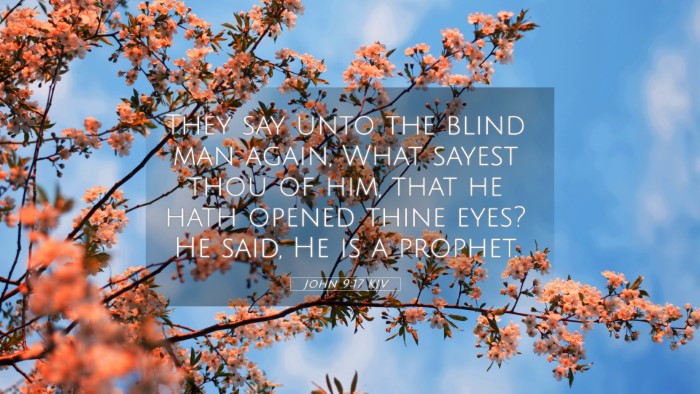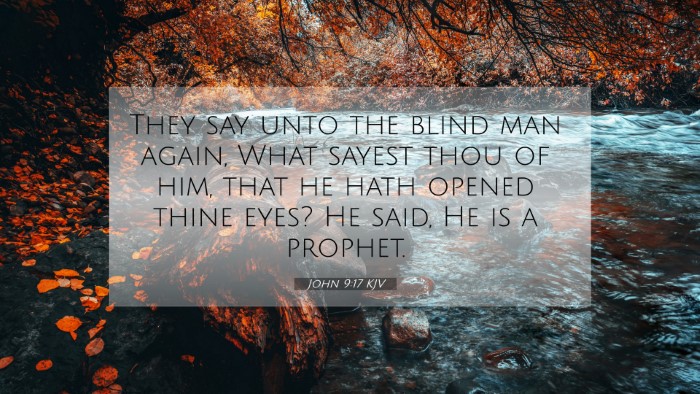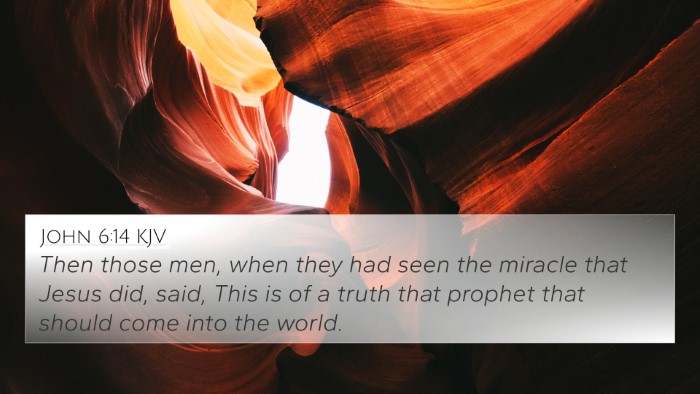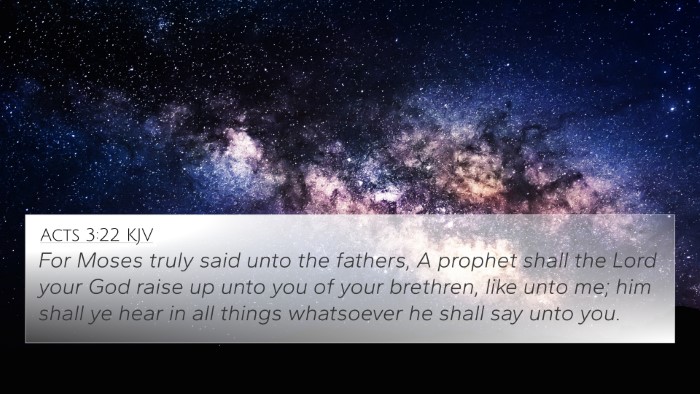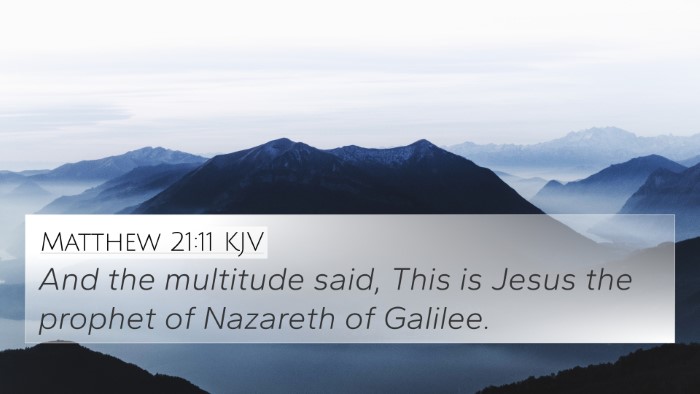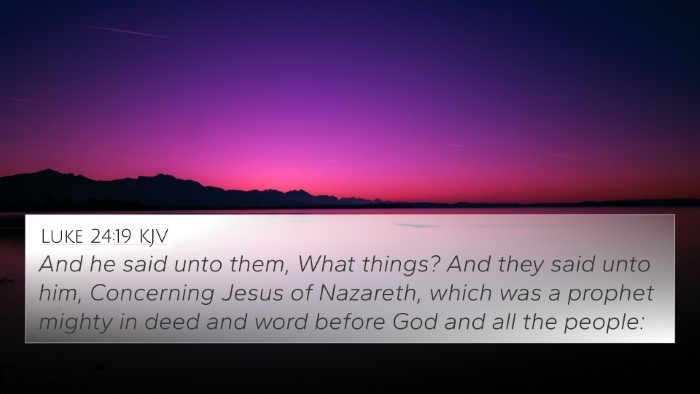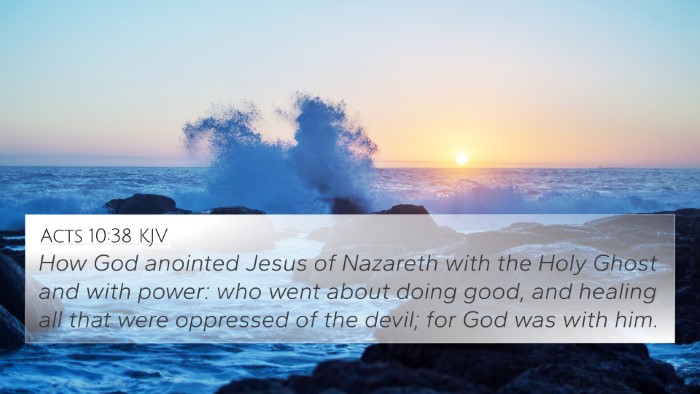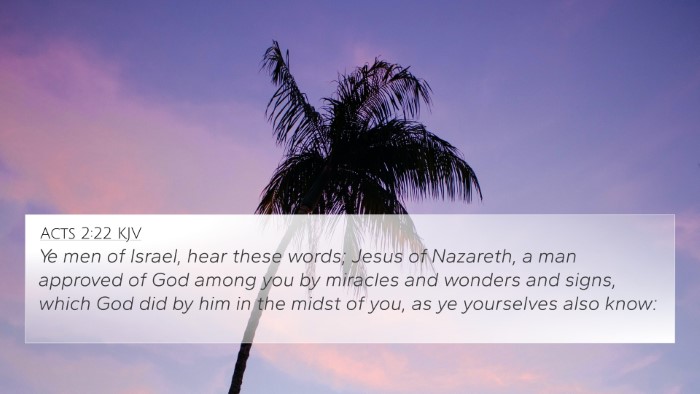Understanding John 9:17
Verse: "Then said they unto the blind man again, What sayest thou of him, that he hath opened thine eyes? He said, He is a prophet."
Summary of the Verse
In John 9:17, the dialogue centers around the healed blind man and the Pharisees who question him about Jesus. This response highlights not only the man's acknowledgment of Jesus's miraculous powers but also his escalating understanding of Jesus's identity as a prophet.
Commentary Insights
-
Matthew Henry's Commentary
Matthew Henry emphasizes that the man’s response evolves over the course of the interrogation. Initially, his understanding is limited to recognizing Jesus as a healer. As the inquiry continues, he seems to articulate a more profound realization, suggesting that Jesus has a divine authority akin to that of a prophet.
-
Albert Barnes' Notes on the Bible
Albert Barnes points out that the blind man's confession reflects a growing awareness of Jesus's identity. His identification of Jesus as a prophet is significant as it marks the first step towards a fuller understanding of Christ's messianic role. This verse highlights the theme of spiritual enlightenment faced with opposition.
-
Adam Clarke's Commentary
Adam Clarke explains that the term "prophet" indicates the blind man's recognition of Jesus's extraordinary nature. Clarke notes this assertion is critical given the religious leaders’ questioning, illustrating the tension between faith and doubt, a recurring theme in the Gospel of John.
Cross-Referencing Biblical Texts
This verse can be linked to several other scriptures that help illuminate its meaning and significance:
- John 1:21: John the Baptist identifies himself, leading to the crowd’s expectation of a prophet.
- Deuteronomy 18:15: A prophecy about a prophet like Moses, connecting Old Testament promises to Jesus.
- John 7:40: Similar reactions to Jesus as some declare he is indeed "the Prophet."
- Matthew 21:11: The crowds recognize Jesus as a prophet when he enters Jerusalem.
- Luke 24:19: The disciples refer to Jesus as a prophet mighty in deed and word, reaffirming this characterization.
- John 3:2: Nicodemus recognizes Jesus as a teacher sent from God, adding to the identity of Jesus.
- Mark 6:15: Some think Jesus is John the Baptist risen, others think of him as a prophet, showing varied perceptions.
- Acts 3:22: Peter references Moses's prophecy about a prophet that points to Jesus' messianic role.
- Matthew 16:13-14: Jesus asks his disciples who people say he is, with similar titles mentioned.
- Luke 13:33: Jesus refers to his prophetic obligation, indicating the continuity of prophetic mission.
Thematic Connections
This verse can also be explored through various themes:
- Faith and Understanding: The blind man's journey from blindness to sight symbolizes the journey from spiritual darkness to light.
- Opposition and Revelation: The questioning by the Pharisees serves as a backdrop for the revelation of Jesus's identity.
- Miraculous Works: The miracle connects to Jesus’s greater mission as a healer and prophet.
- Authority of Christ: By claiming Jesus as a prophet, it implies acknowledgment of His authority.
Practical Application
For personal spiritual growth and understanding of scripture, consider the following:
- Engage with Biblical Cross-References: Utilize tools for Bible cross-referencing to deepen your understanding.
- Reflect on Faith Journeys: Analyze your personal faith journey through the lens of understanding and insight.
- Explore Themes: Study how various themes like faith, authority, and revelation connect throughout scripture.
Conclusion
John 9:17 serves as a crucial moment in the Gospel, illustrating both the physical healing of the blind man and his spiritual awakening. Through the insights of public domain commentaries and the connections drawn from various scriptures, we gain a fuller understanding of not only this passage but the overarching narrative of Jesus’s ministry as a prophet and more. By engaging with cross-references and thematic studies, one is encouraged to further explore the intricate web of connections within the biblical text.
